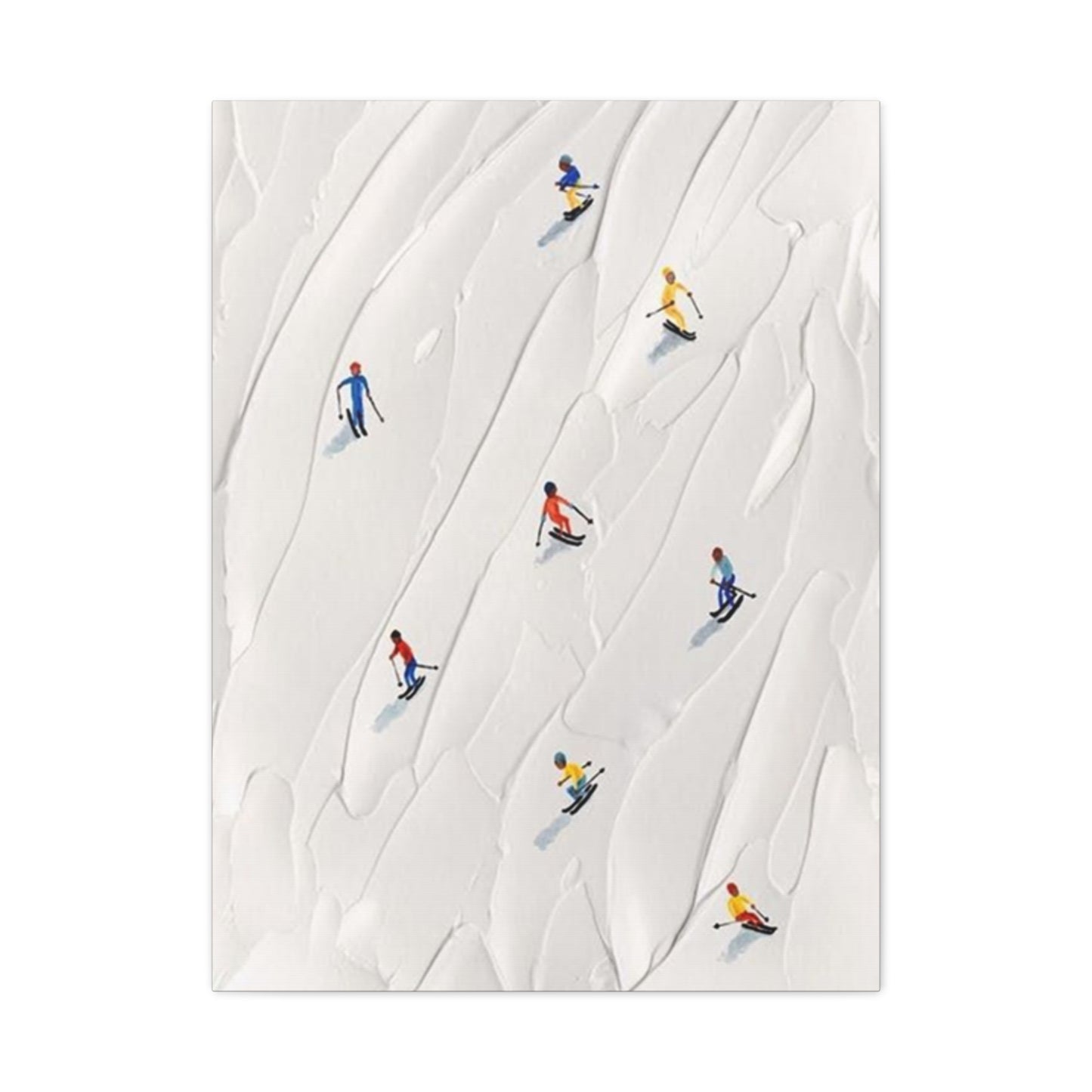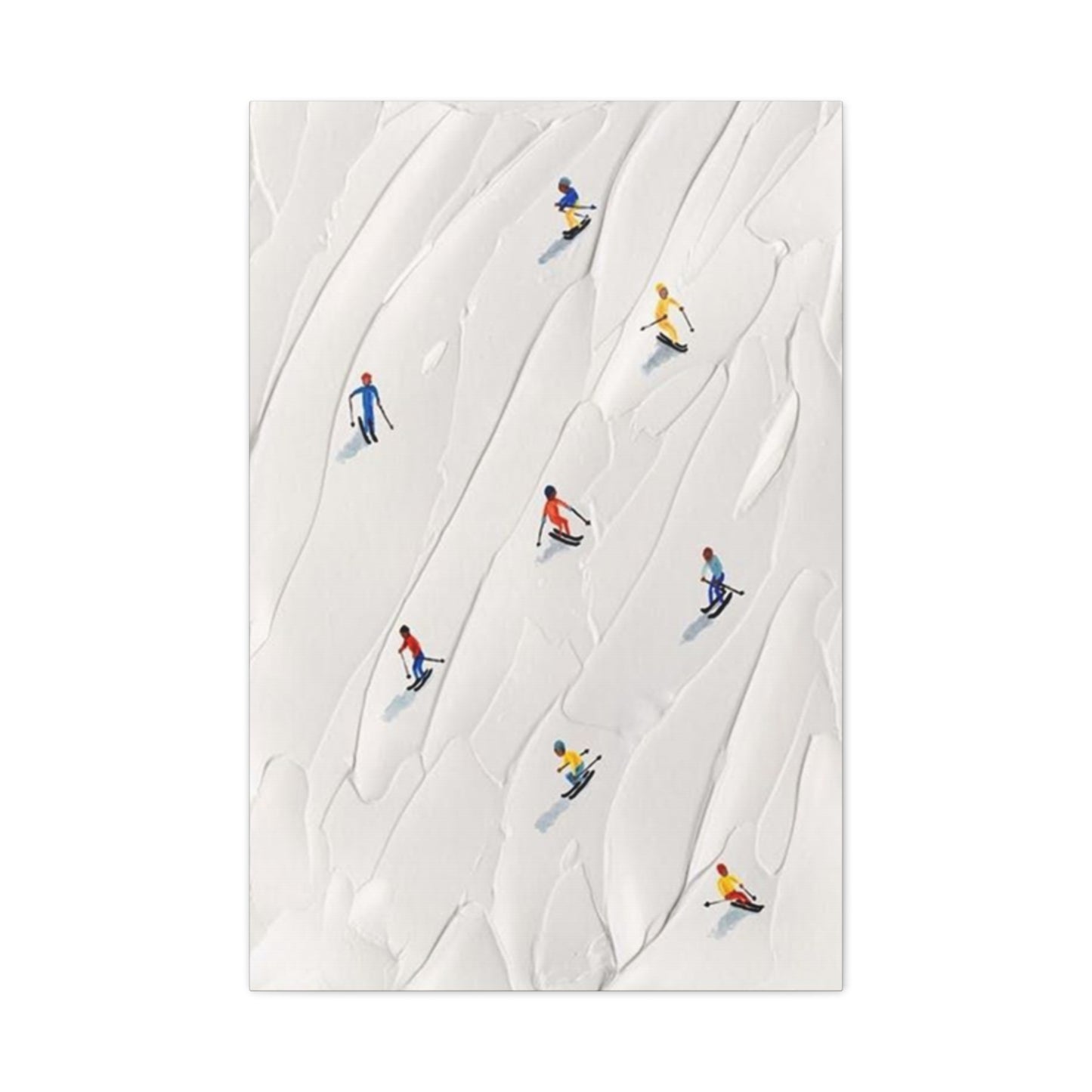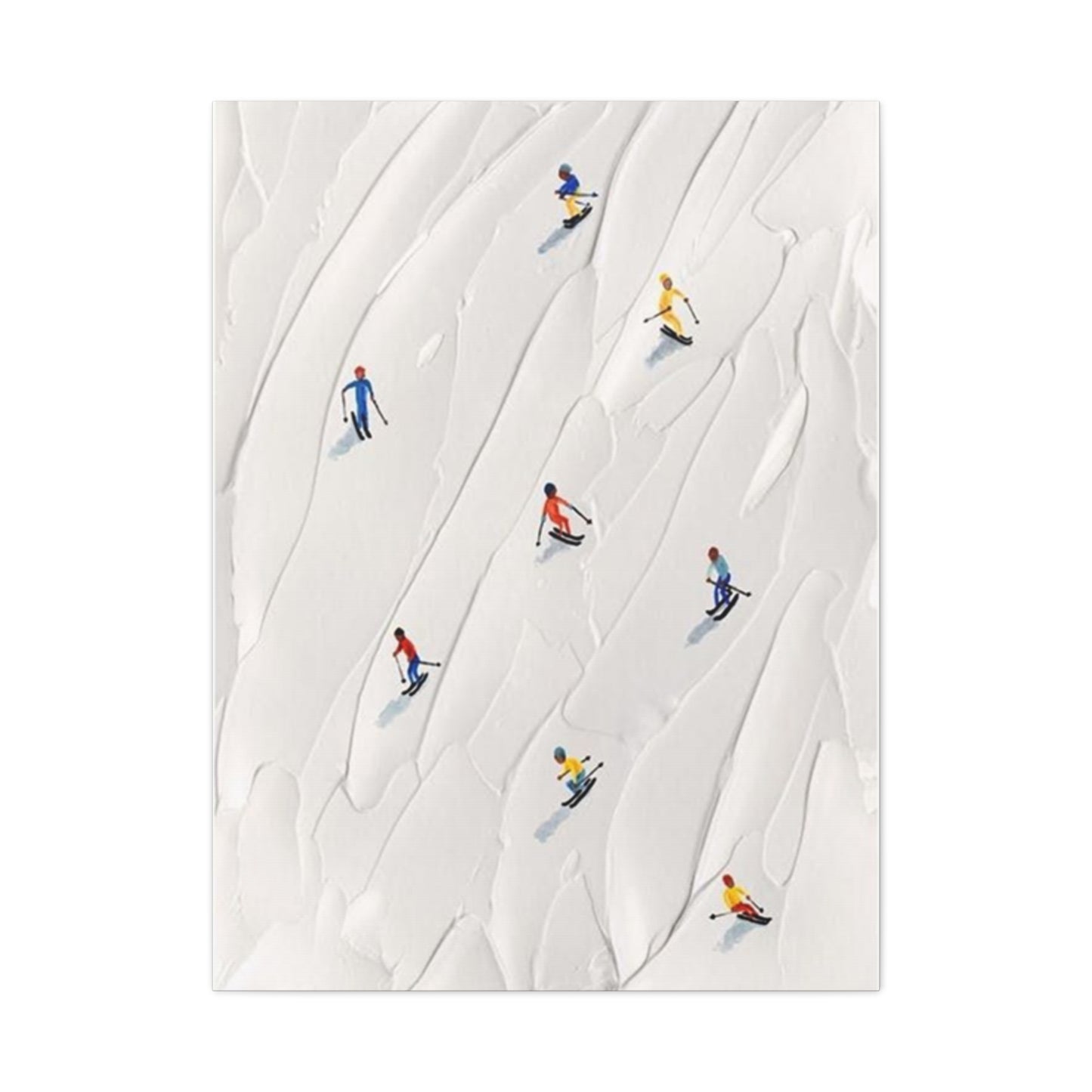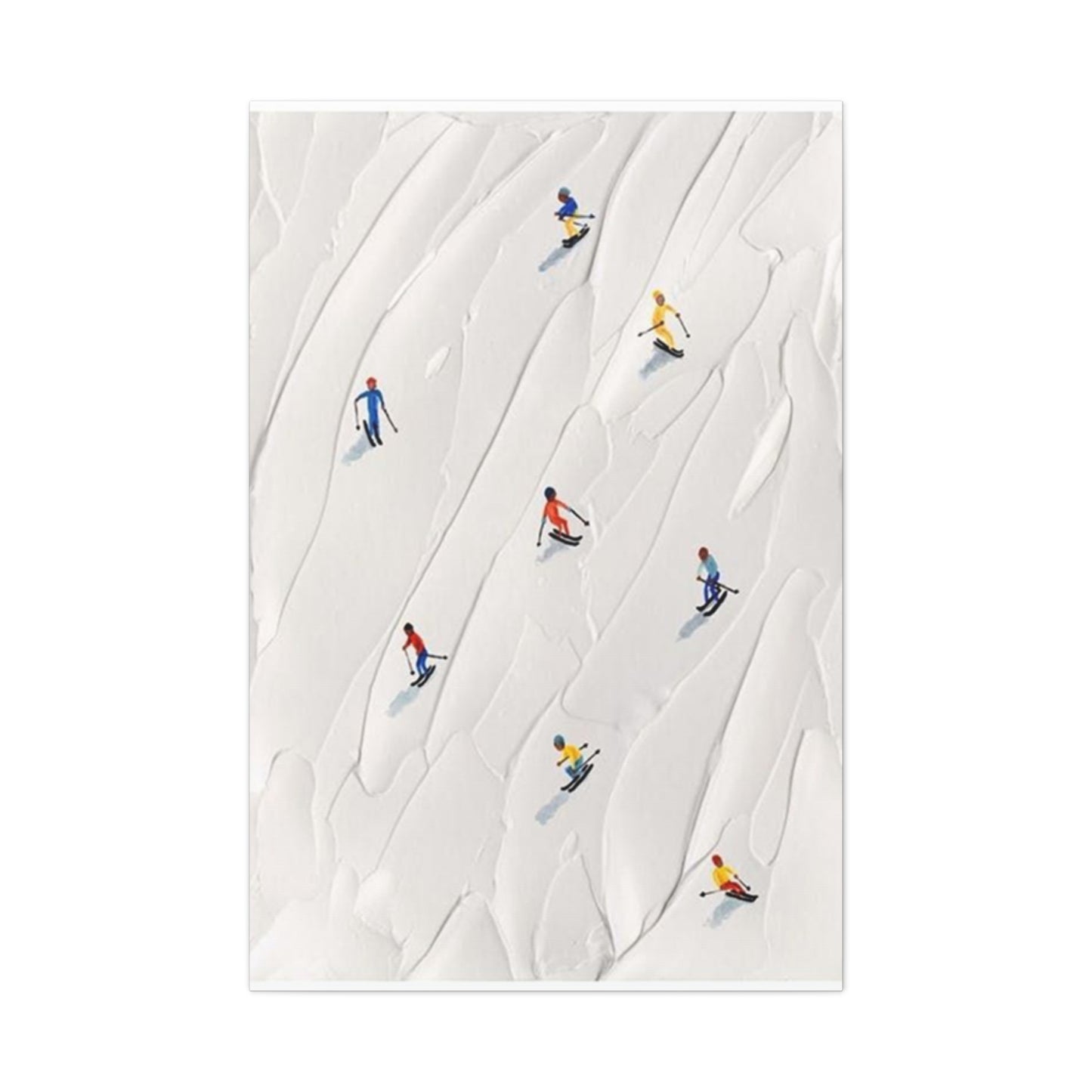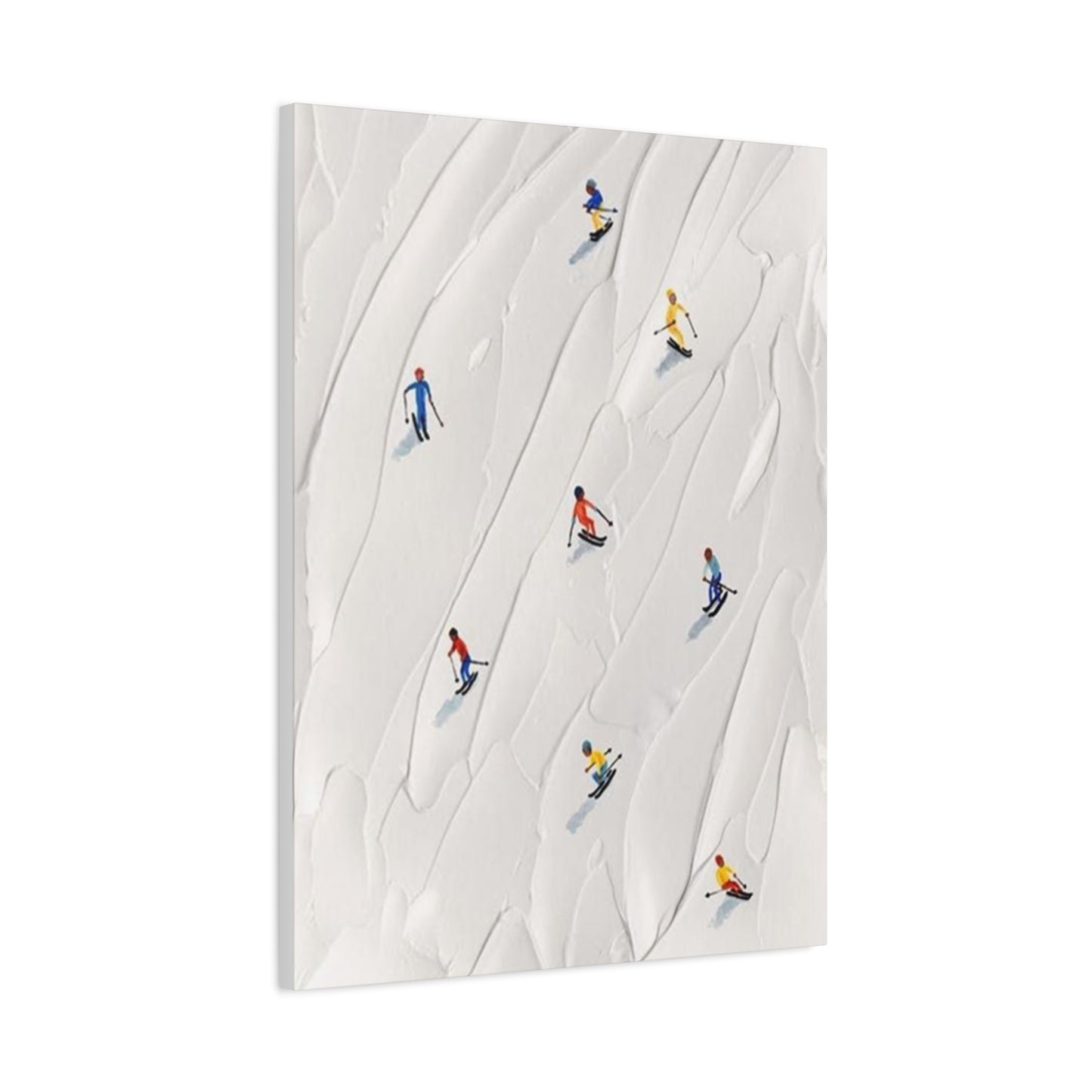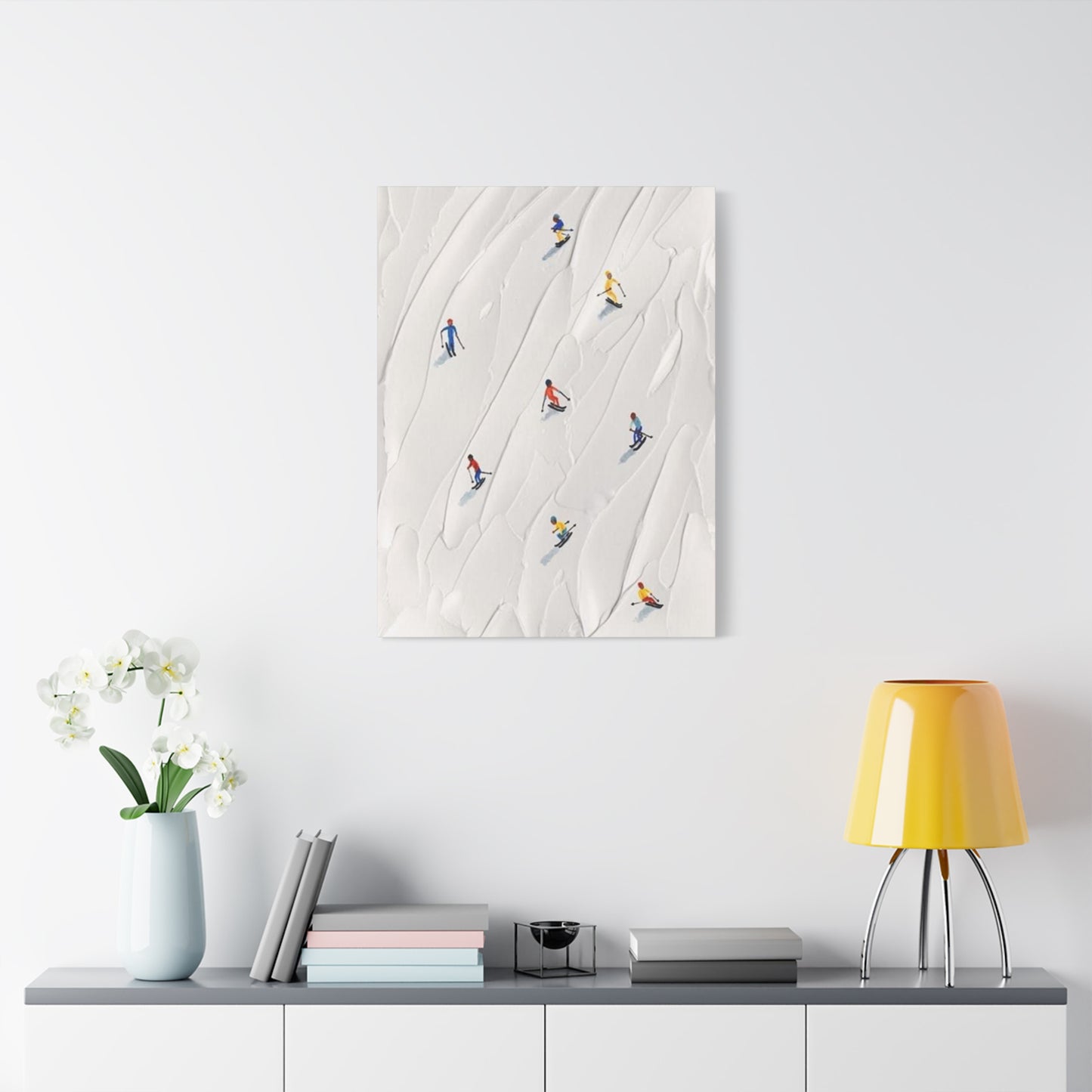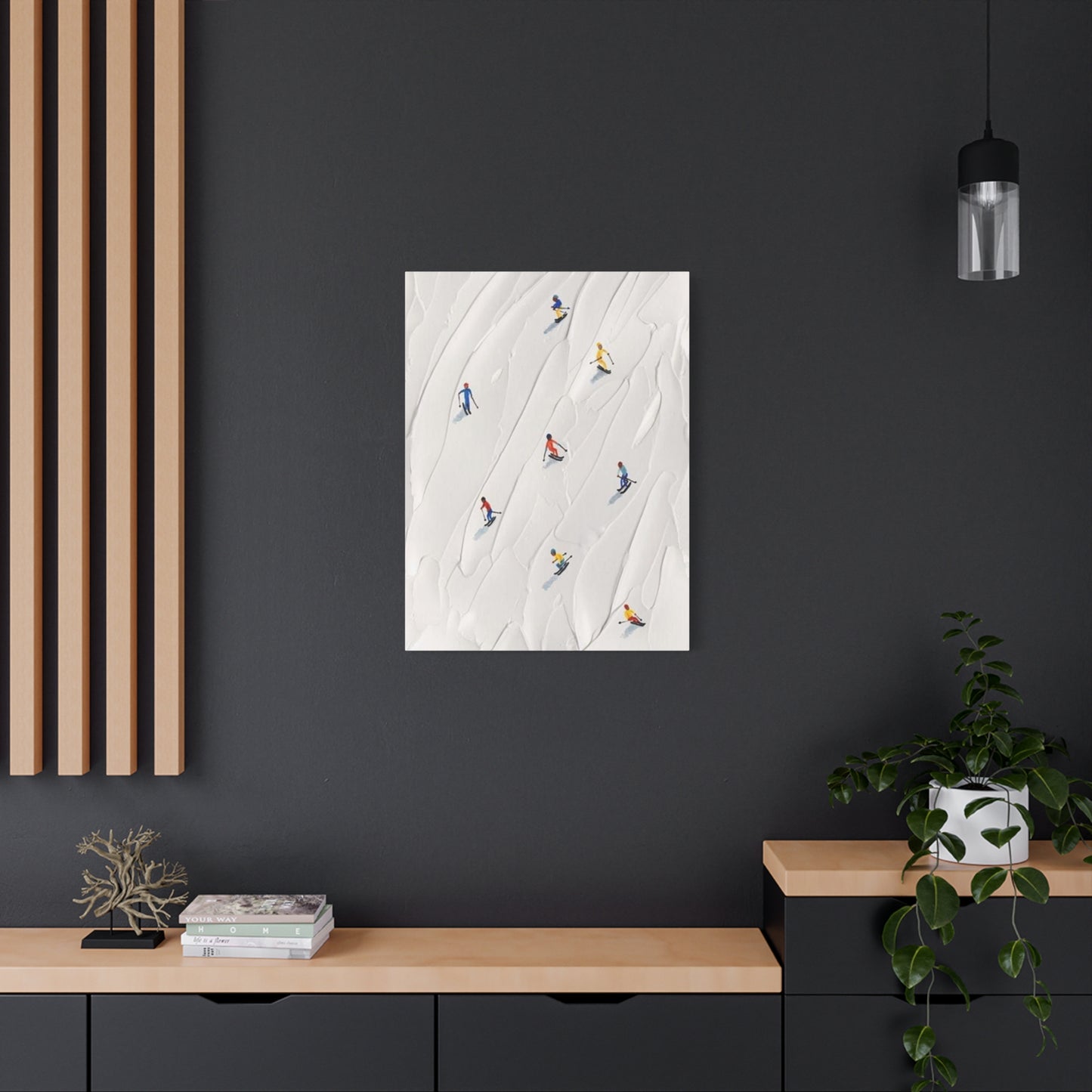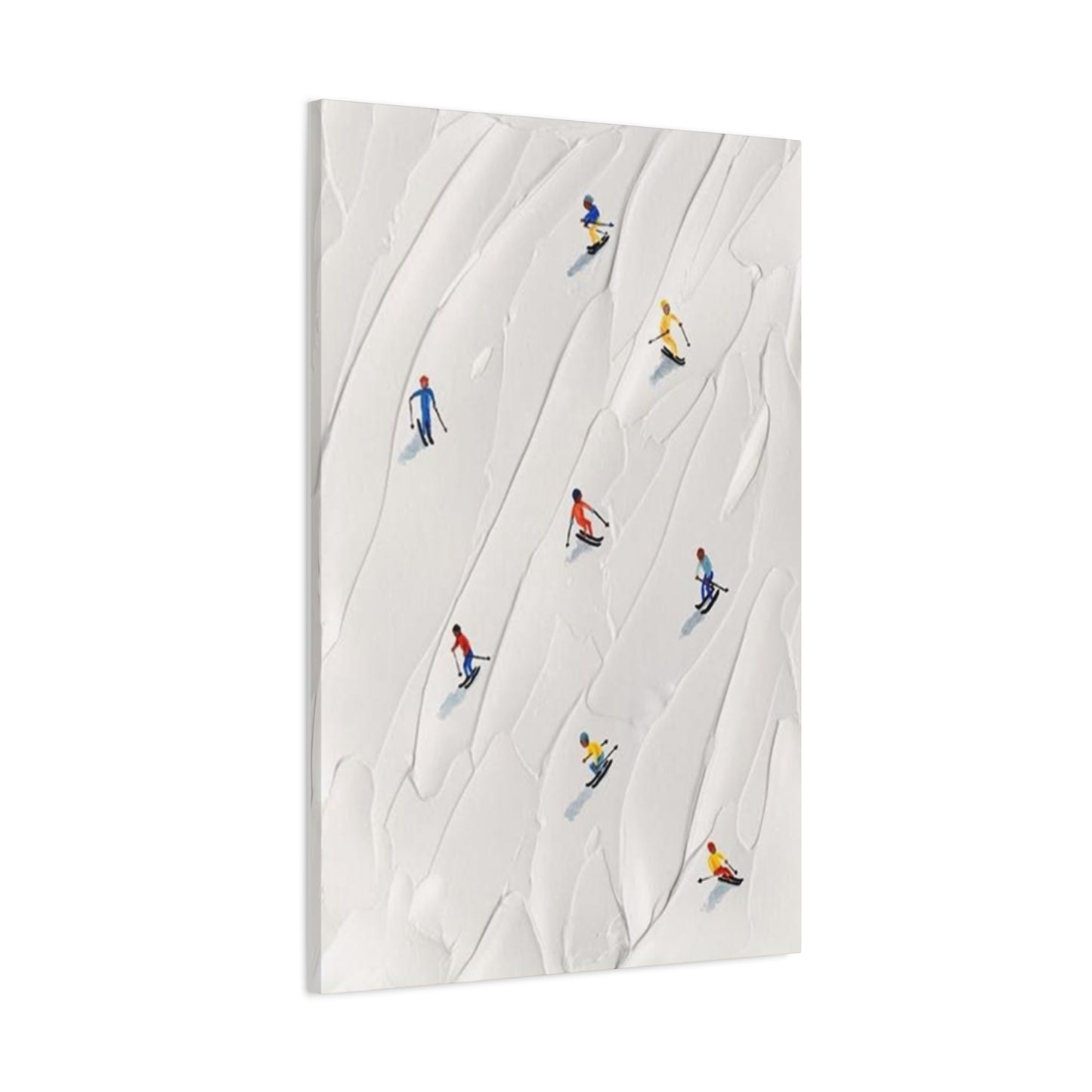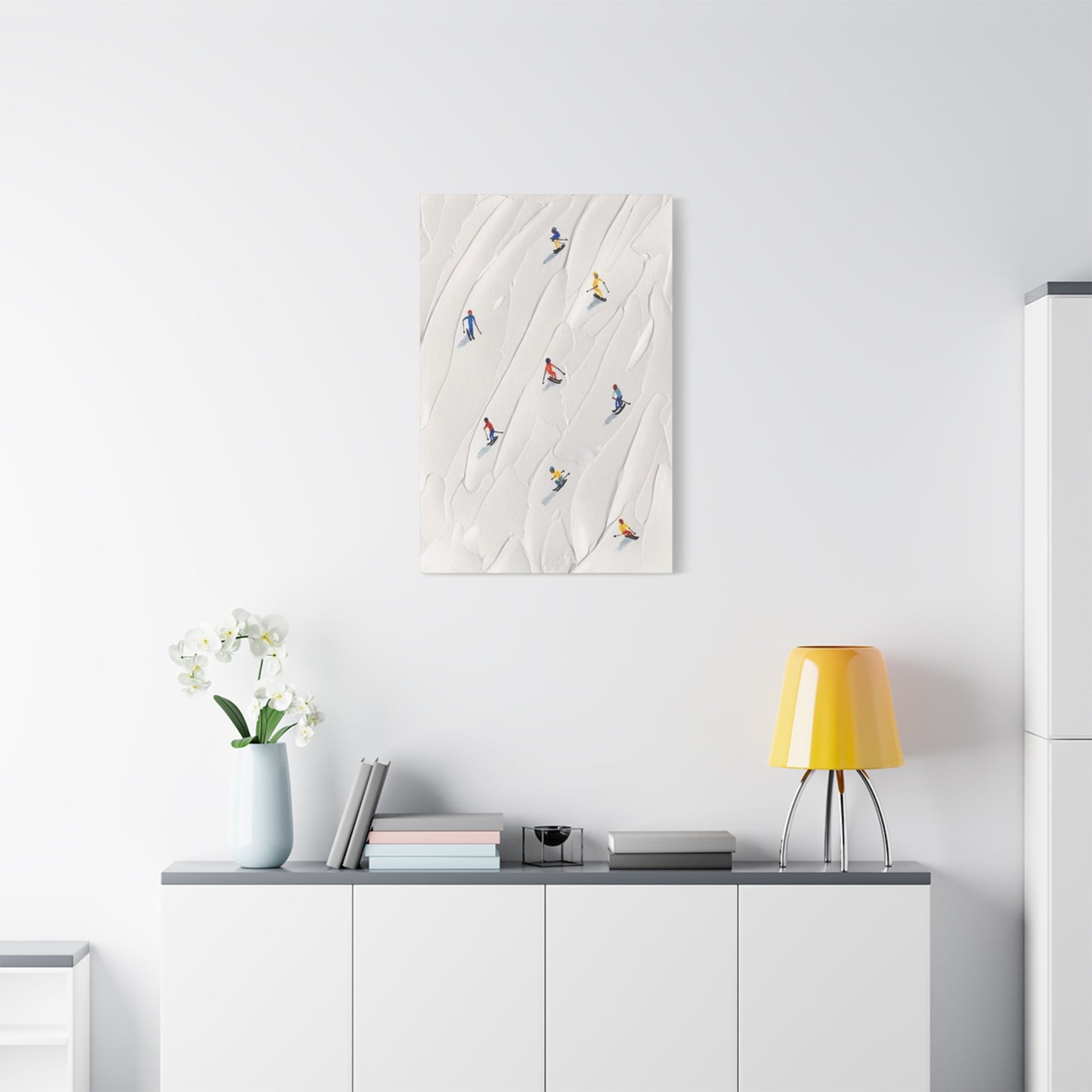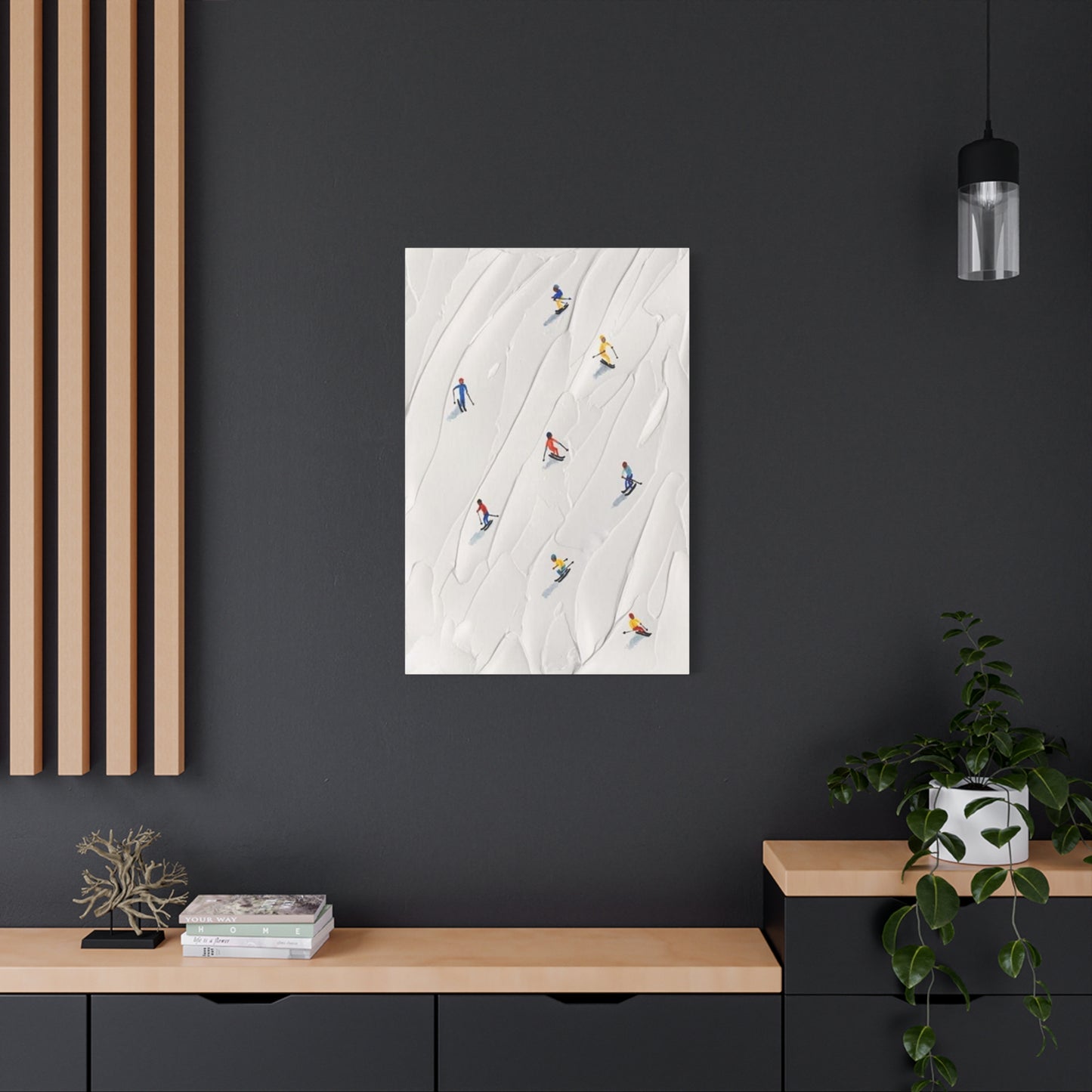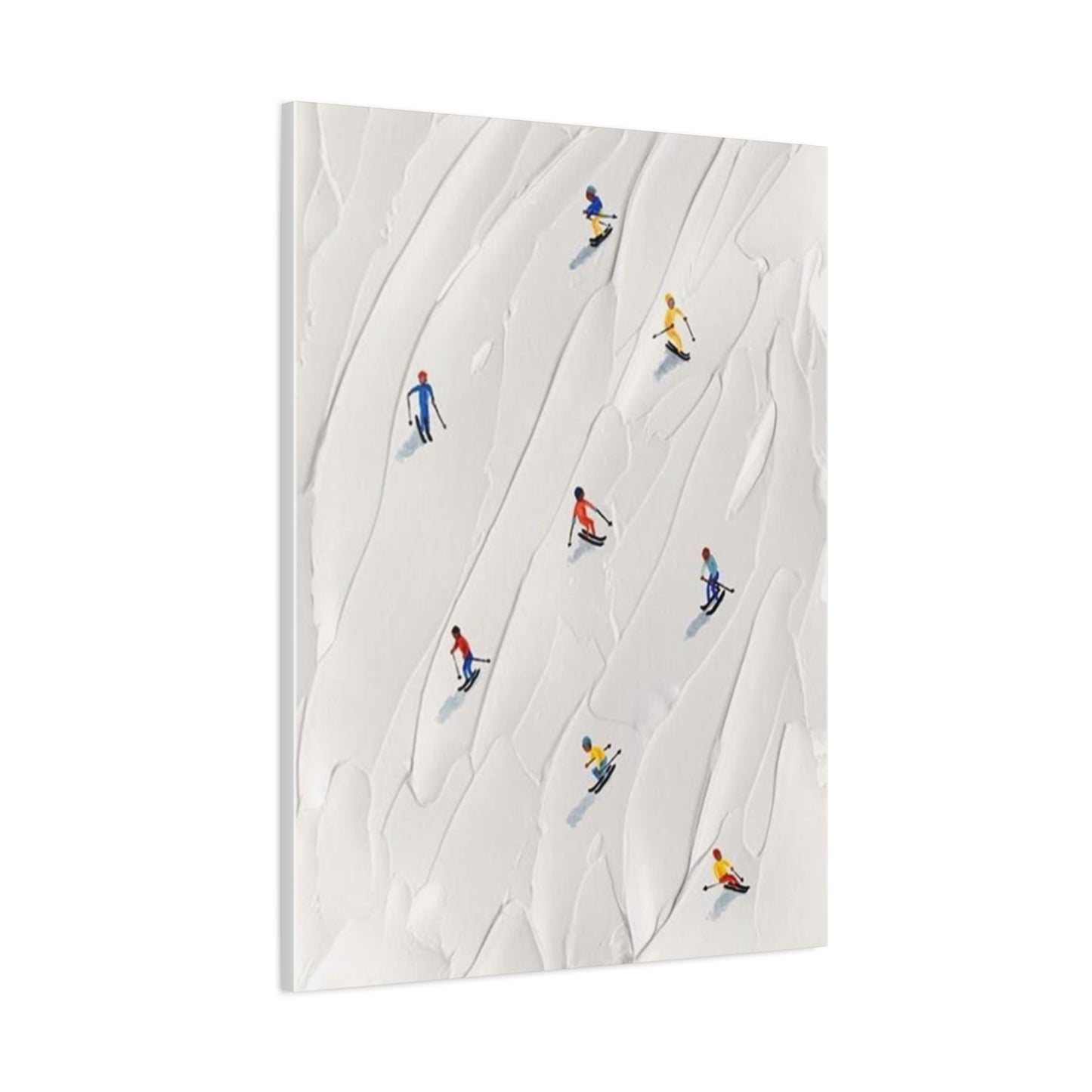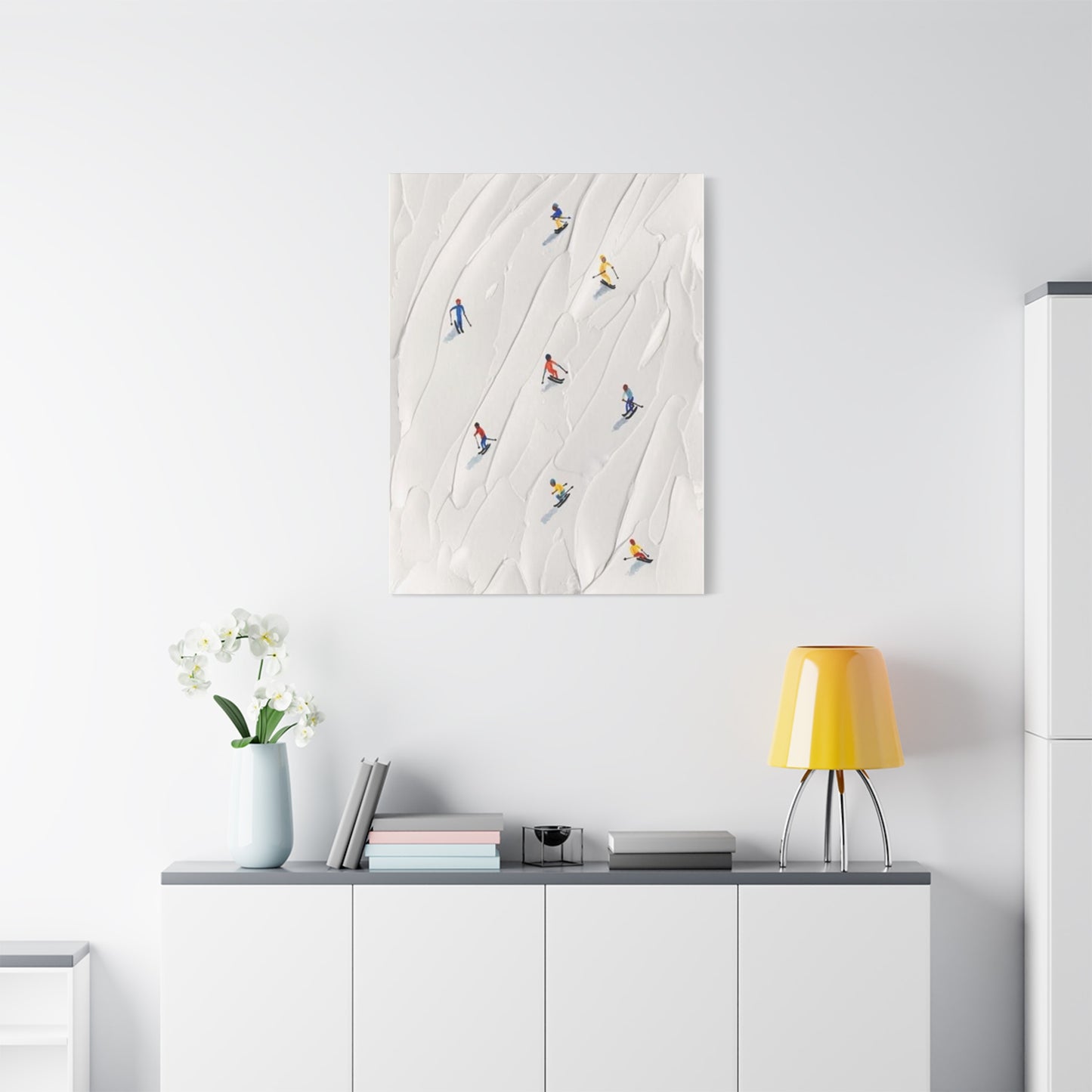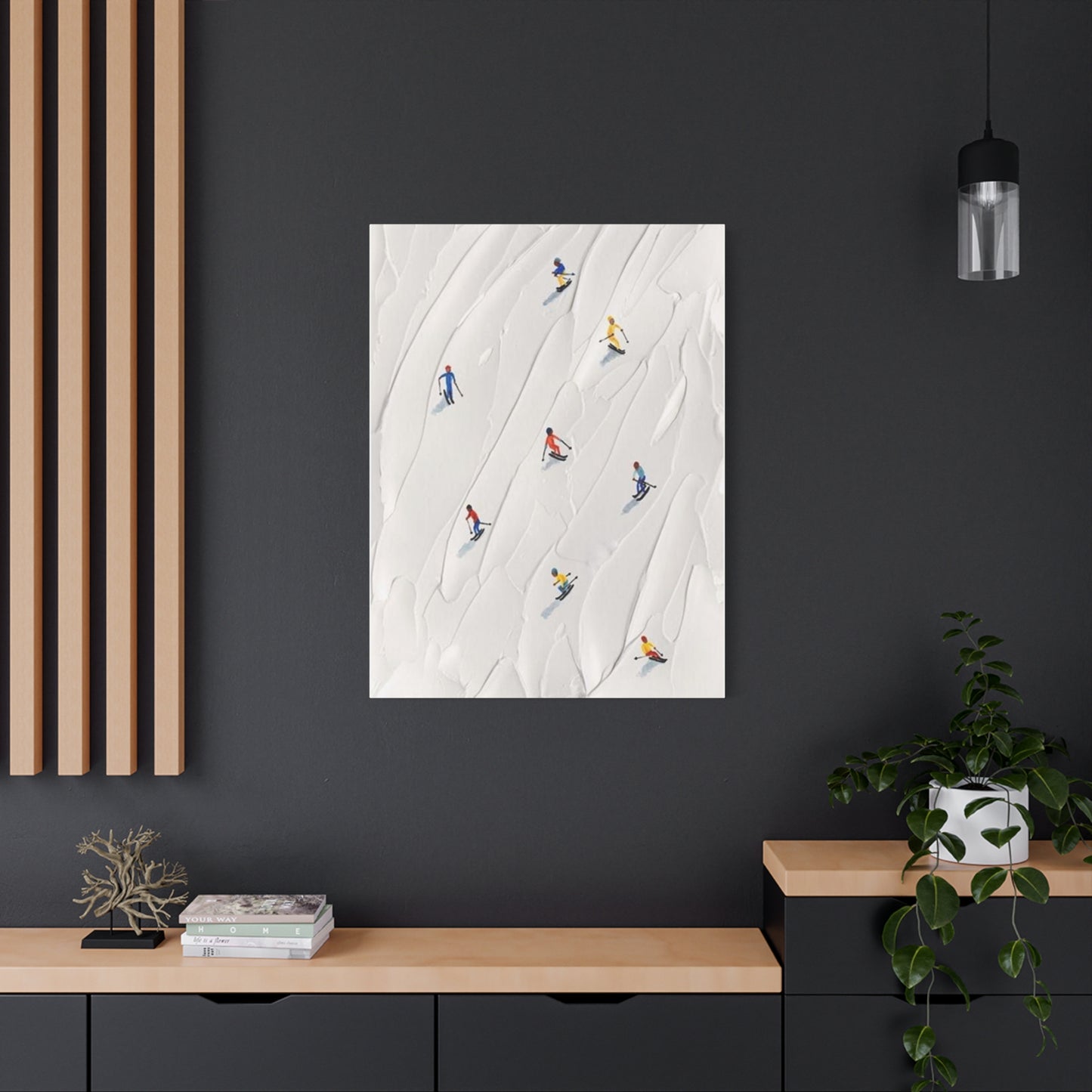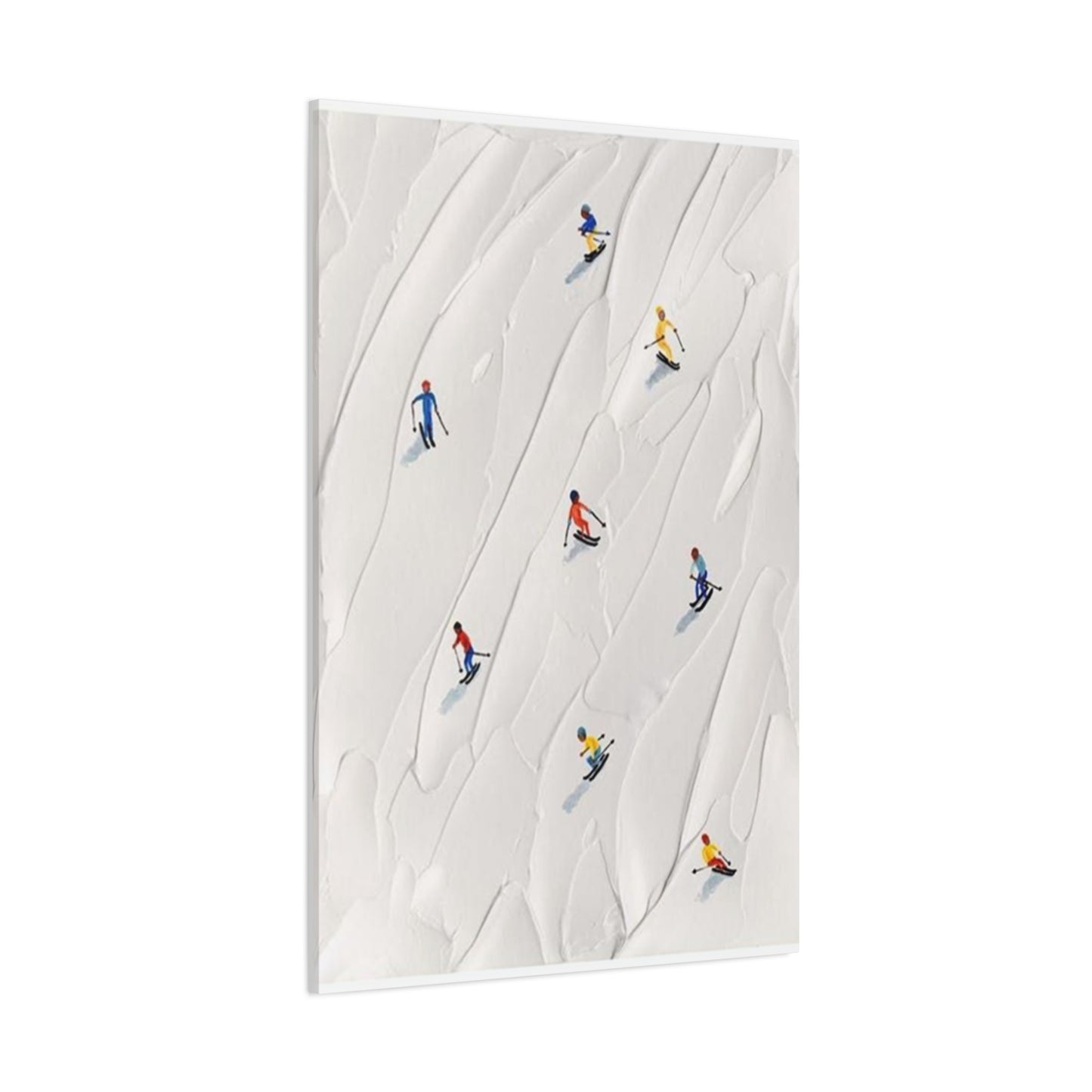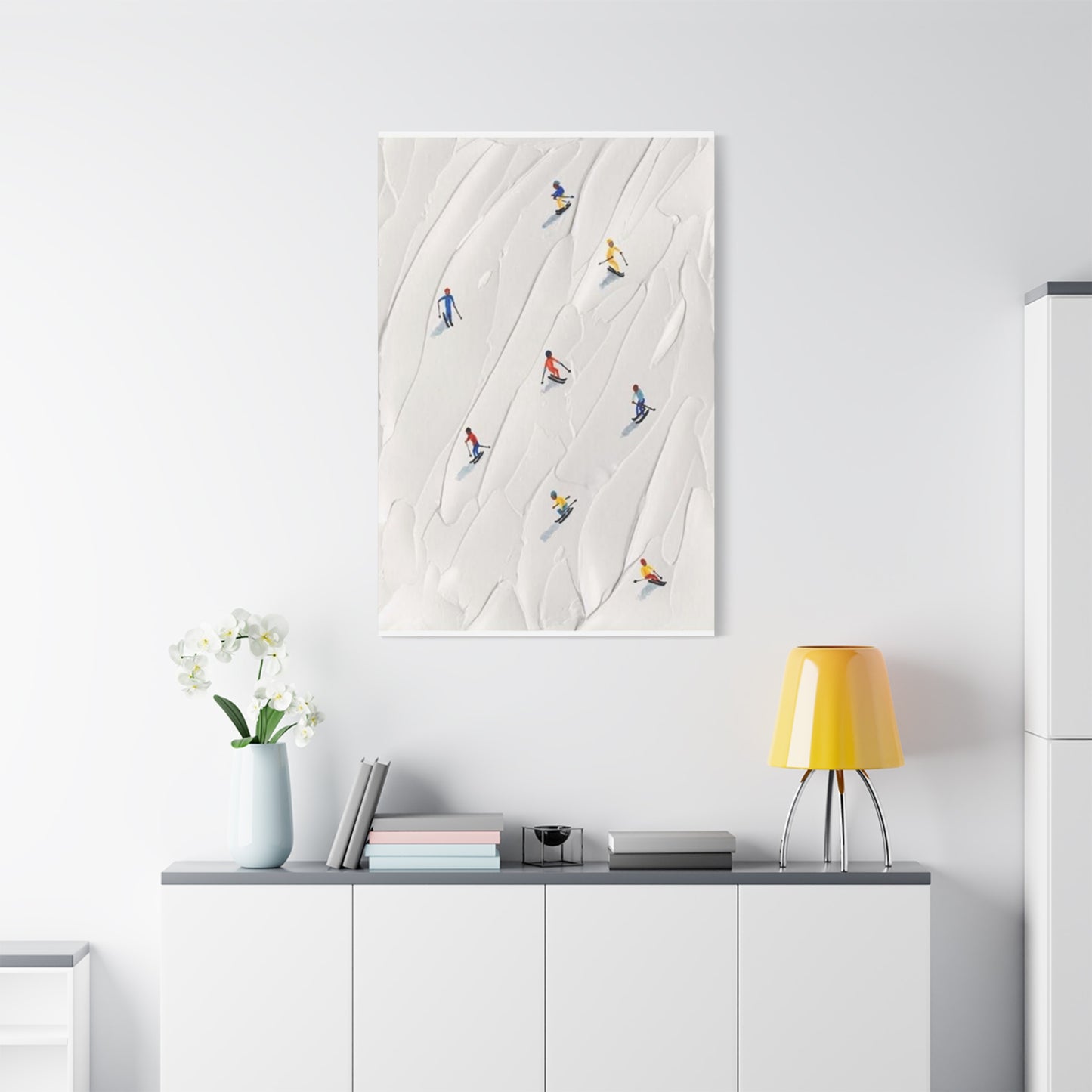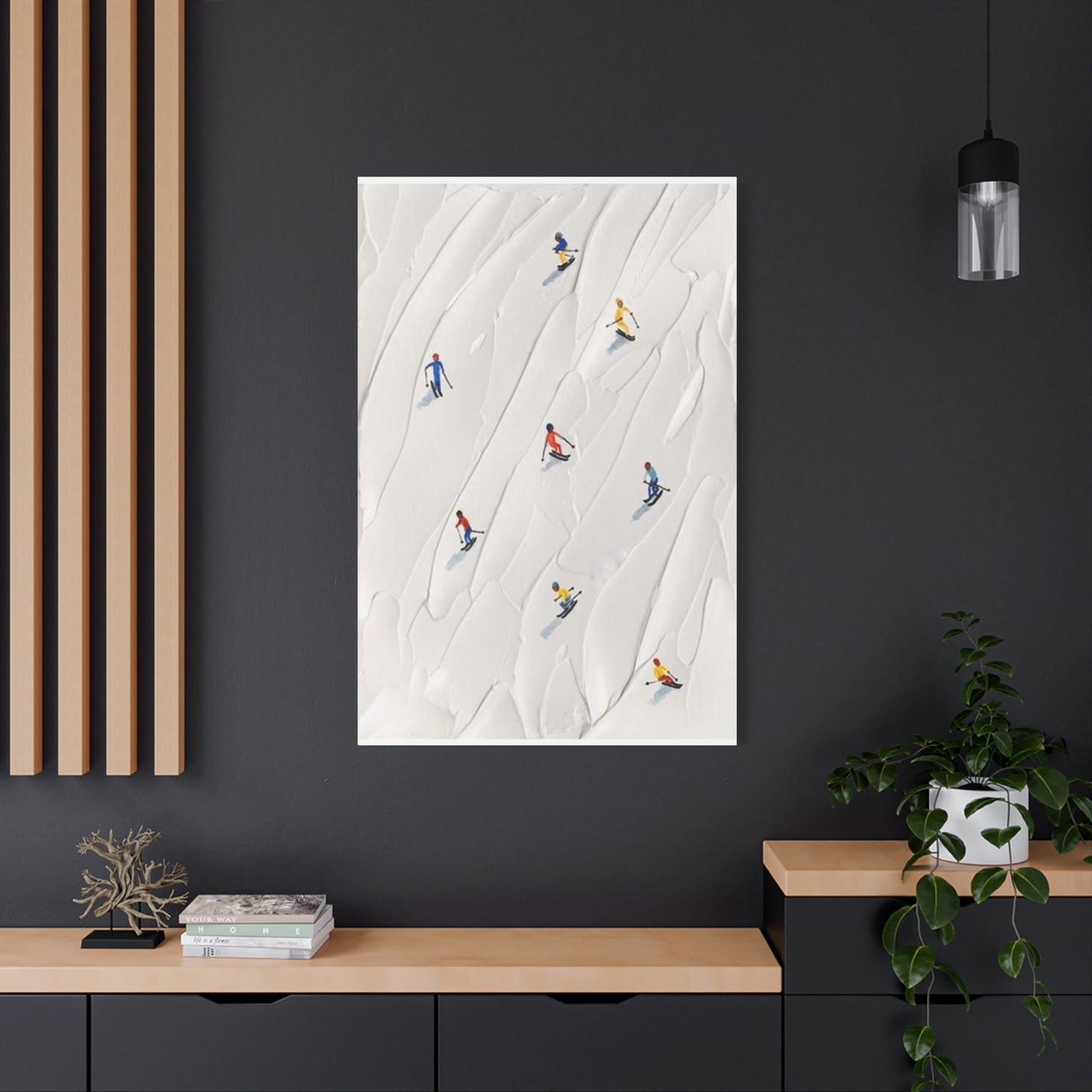Skiing Wall Art: Creative Ideas to Bring Mountain Magic Into Your Home
When winter enthusiasts look to infuse their living spaces with the exhilarating essence of the mountains, skiing wall art becomes an essential element of interior design. Whether you're a seasoned alpine adventurer or someone who simply appreciates the breathtaking beauty of snow-covered peaks, incorporating skiing-themed artwork into your home creates an atmosphere that celebrates the thrill of the slopes throughout every season. The world of skiing wall art has evolved dramatically, offering countless options that range from vintage travel posters to contemporary photographic prints, each capable of transforming ordinary rooms into inspiring spaces that capture the spirit of winter sports.
The popularity of skiing wall art extends far beyond mere decoration. These pieces serve as visual storytelling elements that communicate personal passions, memorable experiences, and aesthetic preferences. For many homeowners, selecting the right skiing artwork becomes a journey of self-expression, allowing them to curate collections that reflect their unique relationship with mountain culture. From cozy chalets nestled in alpine villages to sleek urban apartments, skiing wall art adapts seamlessly to various architectural styles and design philosophies, making it a versatile choice for anyone seeking to create spaces that feel both personal and visually compelling.
Understanding the diverse categories within skiing wall art helps homeowners make informed decisions that align with their vision. Contemporary ski posters bring clean lines and modern sensibilities to interior spaces, while vintage reproductions transport viewers to the golden age of ski travel with their nostalgic charm. Canvas prints offer texture and depth that enhance the tactile experience of a room, whereas framed photographs capture authentic moments from the slopes with striking clarity. The selection process involves considering factors such as color palettes, sizing proportions, framing options, and placement strategies that maximize visual impact while maintaining harmony with existing decor.
Creating a cohesive skiing-themed interior requires thoughtful planning and an eye for balance. Some homeowners opt for gallery wall arrangements that combine multiple pieces into dynamic compositions, while others prefer statement artwork that commands attention as a focal point. The emotional resonance of skiing wall art extends beyond aesthetics, evoking memories of powder days, family vacations, and the peaceful solitude found in mountain environments. This connection between art and personal experience makes skiing wall art particularly meaningful for those who have formed deep bonds with winter landscapes.
Exceptional Ski Posters for Contemporary Living Spaces
Modern ski posters represent a fascinating intersection of artistic innovation and sporting heritage, offering homeowners sophisticated options for elevating their interior spaces. Contemporary designers have reimagined traditional ski poster aesthetics, creating pieces that speak to current sensibilities while maintaining connections to the sport's rich visual history. These posters often feature minimalist compositions, abstract interpretations of mountain landscapes, and bold typographic treatments that distinguish them from their vintage counterparts. The appeal of modern ski posters lies in their ability to complement clean-lined furniture, neutral color schemes, and architectural elements commonly found in today's homes.
When selecting ski posters for modern interiors, consider how graphic elements interact with your existing decor. Many contemporary posters employ limited color palettes featuring sophisticated combinations like charcoal and cream, navy and gold, or monochromatic schemes that create visual harmony without overwhelming spaces. These restrained color choices allow ski posters to integrate seamlessly into rooms where subtlety and refinement take precedence. The typography used in modern ski posters often draws inspiration from mid-century design, Bauhaus principles, or Scandinavian minimalism, resulting in letterforms that feel both timeless and current.
Geometric interpretations of ski subjects have become particularly popular in contemporary poster design. Artists reduce mountains to angular shapes, represent skiers through simplified silhouettes, and transform equipment into iconographic symbols that communicate the essence of skiing without literal representation. This abstraction appeals to homeowners who appreciate art that suggests rather than explicitly depicts, creating visual interest through form and composition rather than detailed illustration. Such posters work exceptionally well in spaces with modernist or industrial design elements, where their graphic quality echoes the clean lines found throughout the environment.
Size considerations play a crucial role when incorporating ski posters into modern interiors. Large-format posters measuring thirty by forty inches or even larger create dramatic focal points that anchor rooms and establish clear design intentions. These substantial pieces work particularly well in lofts, open-concept living areas, and spaces with high ceilings where proportional scale matters significantly. Conversely, smaller posters arranged in grid formations or asymmetrical groupings offer flexibility for tighter spaces while still delivering visual impact through strategic placement and thoughtful curation.
Material quality distinguishes exceptional modern ski posters from mass-market alternatives. Premium printing processes utilizing archival inks on heavy-weight paper stocks ensure longevity and color fidelity that preserve artistic integrity over time. Some contemporary posters incorporate specialty papers with subtle textures that add tactile dimension, while others feature metallic accents or spot varnishes that catch light and create dynamic viewing experiences as natural illumination changes throughout the day. These production details elevate posters from simple decorative items to considered art pieces worthy of prominent placement.
Canvas Prints That Embody Mountain Essence
Canvas prints have emerged as a preferred medium for skiing wall art due to their texture, durability, and museum-quality presentation. Unlike paper-based prints, canvas offers a substantial physical presence that adds depth and dimension to artwork, creating pieces that feel more substantial and gallery-worthy. The woven texture of canvas lends itself particularly well to photographic skiing images, where the material's surface characteristics complement the organic qualities of snow, trees, and mountain landscapes. This natural affinity between medium and subject makes canvas prints especially effective for capturing the alpine spirit in residential settings.
The production process for high-quality canvas prints involves printing images onto cotton or polyester canvas using specialized inkjet printers that deposit archival pigments into the material's fibers. This method ensures exceptional color reproduction and longevity, with properly produced canvas prints maintaining their vibrancy for decades when displayed under appropriate conditions. After printing, canvas is typically stretched over wooden frames in a gallery-wrap style where the image extends around the edges, eliminating the need for traditional framing and creating a contemporary, finished appearance that integrates seamlessly with modern interiors.
Selecting canvas prints that capture the alpine spirit requires consideration of both subject matter and artistic treatment. Dramatic landscape photography showcasing mountain vistas at sunrise or sunset translates beautifully to canvas, where the medium's texture enhances the atmospheric qualities of the scene. Action shots depicting skiers carving through powder or navigating challenging terrain gain intensity when reproduced on canvas, with the material's depth reinforcing the dynamism of the captured moment. Close-up studies of snow textures, weathered ski equipment, or architectural details from mountain lodges offer intimate perspectives that invite contemplative viewing.
Size selection for canvas prints depends on available wall space and desired visual impact. Large single-panel canvases measuring forty by sixty inches or greater command attention and work well as anchor pieces in living rooms, dining areas, or master bedrooms. Multi-panel installations, often called triptychs or polyptychs, divide single images across multiple canvases to create expansive compositions that span entire walls. These segmented presentations add architectural interest while allowing for creative arrangements that accommodate room layouts and furniture placement.
Color treatment significantly influences how canvas prints embody alpine character. Full-color photography captures the spectacular range of hues present in mountain environments, from the azure blues of clear skies to the warm golden tones of alpenglow. Black and white conversions emphasize form, texture, and composition, stripping away chromatic information to focus viewer attention on tonal relationships and graphic elements. Some artists apply selective colorization, maintaining specific elements in color while rendering surroundings in monochrome, creating striking visual contrasts that highlight focal points within compositions.
Creative DIY Projects for Mountain Lodge Ambiance
Do-it-yourself ski wall art projects offer budget-conscious enthusiasts opportunities to create personalized pieces that reflect their unique style and mountain memories. Crafting custom skiing artwork allows for creative expression while developing pieces specifically tailored to existing color schemes, dimensional requirements, and thematic preferences. The satisfaction derived from displaying self-made art adds layers of meaning to home decor, transforming walls into showcases of both artistic ability and personal passion for skiing.
Repurposing vintage ski equipment represents one of the most popular DIY approaches for creating authentic mountain decor. Old wooden skis, once relegated to attics and garage sales, become striking wall installations that celebrate skiing heritage while adding rustic texture to interiors. Mounting crossed skis above mantels or doorways creates focal points that immediately communicate the homeowner's interests. Single skis positioned vertically alongside doorframes or in narrow wall spaces solve decorating challenges while incorporating meaningful objects. Refinishing vintage skis through sanding and sealing preserves their aged patina while protecting against further deterioration, maintaining their authentic character.
Creating custom ski trail maps transforms personal mountain experiences into unique artistic statements. Obtaining trail maps from favorite resorts, enlarging them through digital scanning and printing, and mounting them on foam board or wooden panels produces conversation pieces that document skiing history. Adding pins, flags, or annotations marking favorite runs, memorable dates, or significant achievements personalizes these maps further, transforming them into visual journals of mountain adventures. Framing multiple maps from different resorts creates gallery walls that celebrate diverse skiing experiences while showcasing graphic variety.
Photograph collages arranged in creative configurations bring personal skiing memories onto walls in dynamic presentations. Selecting images that represent different aspects of ski experiences, from action shots to scenic landscapes to candid moments with friends and family, creates narratives that unfold across wall surfaces. Arranging photographs in geometric grids provides structured, contemporary presentations, while organic layouts with varied frame sizes and asymmetrical placements feel more casual and personal. Consistent framing in matching colors and styles unifies collections, while mixed frames in complementary finishes add eclectic charm.
Canvas transfer techniques allow DIY enthusiasts to transform favorite skiing photographs into textured artwork with professional appeal. Printing images on special transfer paper, applying them to pre-stretched canvases using gel medium, and carefully removing paper backing reveals transferred images with distinctive, aged appearances. This process creates one-of-a-kind pieces that combine personal photography with handcrafted artistry, resulting in skiing wall art that cannot be replicated. Experimenting with different image treatments, opacity levels, and finishing techniques produces varied results that range from crisp and contemporary to soft and vintage-inspired.
Typography-based skiing art projects combine inspirational quotes, favorite mountain names, or meaningful coordinates with graphic design elements to create text-focused pieces. Using computer software to design layouts, selecting fonts that match desired aesthetics, and printing on quality paper or canvas produces custom artwork at minimal cost. Hand-lettering approaches add personal touches and artisanal qualities that distinguish pieces from digitally produced alternatives. Incorporating skiing-related imagery alongside text creates balanced compositions that communicate messages through both words and visuals.
Shadow box displays transform three-dimensional skiing memorabilia into protected, gallery-worthy installations. Arranging lift tickets, trail maps, photographs, pins, and small equipment items within deep frames creates layered compositions that tell stories through collected objects. Selecting shadow boxes with dimensions appropriate to contained items prevents overcrowding while ensuring adequate depth for layered arrangements. Using archival mounting techniques protects valuable memorabilia from damage while maintaining display quality over time.
Strategic Placement Techniques for Compact Areas
Maximizing visual impact when displaying skiing wall art in small spaces requires thoughtful planning and strategic decision-making. Limited square footage presents unique challenges but also opportunities for creating focused, intentional displays that avoid the cluttered feeling sometimes present in larger rooms with excessive artwork. Understanding spatial principles, scale relationships, and visual flow enables homeowners to successfully incorporate meaningful skiing art even in modest apartments, narrow hallways, or cozy rooms where every inch matters.
Vertical arrangements leverage often-underutilized wall height in small spaces, drawing eyes upward and creating the illusion of greater volume. Stacking two or three smaller skiing prints vertically emphasizes room height while occupying minimal horizontal space, making this approach particularly effective in narrow areas like hallways or beside doorways. Ensuring consistent spacing between stacked pieces creates rhythm and intentionality, while varying the spacing can add dynamic energy to compositions. This vertical emphasis counteracts the potentially cramped feeling in small rooms by redirecting attention away from limited floor area toward vertical dimensions.
Single statement pieces often prove more effective than multiple smaller artworks in compact spaces. One well-chosen skiing print that relates appropriately to room scale prevents visual fragmentation and creates a clear focal point that organizes the space. Selecting artwork with significant negative space or minimal compositions prevents overwhelming small rooms with excessive detail. The breathing room within such pieces allows eyes to rest while still providing meaningful visual interest. This less-is-more approach aligns with minimalist principles that serve small spaces particularly well.
Corner placements transform often-neglected spatial dead zones into intentional display areas. Positioning smaller skiing prints in corners, either as single pieces or in small groupings, activates these spaces while avoiding competition with furniture arrangements that typically center on walls. Corner displays work especially well in bedrooms, home offices, or reading nooks where they complement rather than dominate the overall environment. Using corner-specific floating shelves provides dimensionality and creates opportunities to incorporate small skiing-related objects alongside artwork, building cohesive thematic displays within compact footprints.
Over-furniture hanging strategies make efficient use of wall space while creating visual connections between art and functional elements. Positioning skiing artwork above sofas, beds, or console tables establishes relationships between pieces and furniture that make spaces feel deliberately designed. Proper sizing ensures artwork neither overwhelms nor gets lost above furniture, with general guidelines suggesting art width should measure between two-thirds and three-quarters of the furniture width below. Centering artwork above furniture creates balanced, harmonious arrangements that feel natural and considered.
Leaning artwork against walls rather than hanging provides flexibility particularly valuable in rental situations or for those who frequently refresh their decor. Propping framed skiing prints on mantels, shelves, or even the floor against walls creates casual, layered looks that feel curated rather than formal. This approach simplifies installation while allowing easy repositioning as tastes evolve. Combining leaned artwork with small decorative objects creates vignettes that add personality to small spaces without requiring permanent wall modifications.
Multi-functional display solutions maximize utility in space-constrained environments. Positioning skiing artwork on the backs of bookshelves creates surprise visual interest in otherwise utilitarian furniture. Installing picture ledges that double as small shelving provides both art display and storage functionality. Selecting artwork with hidden storage frames that conceal small items combines decoration with practicality. These clever solutions particularly suit efficiency apartments and small homes where every element must justify its spatial footprint through multiple contributions.
Light-colored artwork and frames help small spaces feel more open and airy compared to dark, heavy pieces that can make compact rooms feel closed-in. Skiing prints featuring bright snow scenes, clear blue skies, or predominantly white compositions reflect light and contribute to spacious atmospheres. Simple frames in white, light wood, or thin metal profiles avoid visual weight that might overwhelm small walls. This strategic color selection extends limited square footage psychologically even when physical dimensions remain unchanged.
Proportional scaling prevents artwork from dominating small rooms inappropriately. Choosing pieces that relate proportionally to wall size and room volume creates harmony rather than imbalance. In particularly small spaces, artwork measuring twelve by sixteen inches or smaller often proves most appropriate, while medium-sized rooms might accommodate pieces up to twenty by thirty inches. Testing potential sizes using paper templates taped to walls before purchasing helps visualize scale relationships and prevents costly sizing mistakes.
Historic Ski Advertisements Bringing Period Ambiance
Vintage ski advertisements represent fascinating intersections of commercial art, social history, and sporting culture, offering contemporary homeowners opportunities to incorporate pieces with both aesthetic appeal and historical significance. These posters, originally created to promote ski resorts, equipment manufacturers, or winter travel destinations, employed talented illustrators and graphic designers who elevated promotional materials into genuine art. The bold colors, stylized figures, and optimistic messaging characteristic of mid-century advertising create nostalgic charm that resonates powerfully in today's interiors, connecting viewers to skiing's romantic past.
The golden age of ski poster design spanned roughly from the 1930s through the 1960s, when European and North American ski destinations commissioned artwork to attract tourists during the sport's explosive growth period. Artists working in styles ranging from Art Deco to Mid-Century Modern created images that emphasized glamour, adventure, and the sophisticated lifestyle associated with skiing. Elegant skiers in period-appropriate attire glide down stylized slopes beneath dramatic mountains rendered in vibrant, sometimes fantastical colors. These posters captured aspirational visions of ski vacations as luxurious escapes available to those with means and taste.
Collecting vintage ski advertisements requires understanding the differences between original posters and modern reproductions. Authentic vintage pieces command premium prices due to their rarity and historical value, appealing to serious collectors who appreciate artwork as investment. These originals show age-appropriate characteristics including paper discoloration, minor tears, and printing imperfections that validate authenticity and add to their antique appeal. Modern reproductions use contemporary printing processes to create affordable alternatives that capture the visual charm of vintage designs while maintaining durability and color vibrancy suitable for everyday display.
Geographic specificity adds layers of interest to vintage ski advertising. Posters promoting specific resorts like Chamonix, St. Moritz, Aspen, or Sun Valley document the development of famous ski destinations while showcasing regional aesthetic approaches. European posters often featured more illustrative, artistic styles influenced by poster art traditions, while American examples sometimes adopted bolder, more graphic treatments aligned with domestic advertising trends. Collecting posters from specific regions or featuring particular resorts creates focused collections with coherent narratives and geographic themes.
Equipment advertisements from vintage ski manufacturers offer alternative approaches to historic skiing art. Posters promoting ski brands, bindings, boots, and outerwear feature product-focused designs that nonetheless capture period styling and graphic sensibilities. These pieces particularly appeal to equipment enthusiasts and those interested in skiing's technological evolution. The obsolete products depicted spark conversations about how dramatically skiing equipment has advanced, while the advertising's artistic merit justifies display independent of product significance.
Railroad and travel company posters promoting ski destinations represent particularly desirable vintage advertisements. During skiing's early growth, rail companies and tour operators commissioned spectacular posters to encourage winter travel to mountain regions. These pieces often featured the most accomplished poster artists of their era, resulting in exceptional design quality. The romantic depictions of train travel combined with idyllic ski scenes create compelling visual narratives that celebrate both journey and destination. These posters work beautifully in homes decorated with period furnishings or for those seeking to evoke the glamorous travel era before commercial aviation.
Color palettes in vintage ski advertisements tend toward saturated, optimistic hues that reflect period printing capabilities and aesthetic preferences. Rich blues representing clear winter skies, vibrant oranges and yellows suggesting warm sunshine, and exaggerated snow whites create cheerful, energetic compositions that brighten contemporary interiors. These bold color choices contrast dramatically with the neutral tones common in modern decorating, allowing vintage posters to function as colorful focal points that energize otherwise restrained spaces. Understanding how these historic colors interact with contemporary palettes helps integrate vintage pieces harmoniously.
Authentication and condition assessment prove critical when acquiring vintage ski advertisements for significant investment. Consulting with poster specialists, examining printing techniques, and verifying provenance protects buyers from reproductions misrepresented as originals. Condition significantly affects value, with posters exhibiting minimal damage commanding premiums over heavily deteriorated examples. Professional restoration can address certain condition issues, though collectors debate whether restoration enhances or diminishes long-term value. Transparent condition reporting from reputable dealers protects buyers and ensures satisfaction with purchases.
Framing vintage ski advertisements requires balancing preservation needs with display aesthetics. Museum-quality materials including acid-free mats, UV-protective glazing, and archival mounting techniques protect valuable posters from deterioration while allowing safe display. Frame styles should complement poster ages and aesthetics, with options ranging from period-appropriate moldings that enhance vintage character to sleek contemporary frames that create juxtaposition between old artwork and modern presentation. Professional framers experienced with vintage paper guide these decisions, ensuring both protection and beautiful presentation.
Curated Collections for Winter Sports Enthusiasts
Creating gallery walls dedicated to skiing themes offers enthusiasts opportunities to develop comprehensive visual narratives that celebrate their passion across multiple artworks. Unlike single statement pieces, gallery wall arrangements combine various images, sizes, and sometimes media types into unified compositions that transform entire walls into cohesive artistic installations. Planning successful skiing gallery walls requires balancing individual piece merit with overall compositional harmony, ensuring collections feel intentionally curated rather than randomly assembled. The resulting displays become defining features of rooms, immediately communicating homeowner interests while providing lasting visual interest.
Thematic coherence strengthens gallery wall impact by establishing clear focus areas that guide selection and arrangement decisions. Some skiing enthusiasts build collections around specific resorts or mountain ranges, documenting various perspectives and seasons from beloved destinations. Others organize by color stories, choosing pieces that share complementary palettes regardless of subject variations. Action-focused gallery walls feature dynamic skiing photography and illustrations emphasizing movement and athleticism, while landscape-oriented collections prioritize scenic beauty and natural grandeur. Equipment-themed walls showcase vintage gear, technical diagrams, and manufacturer advertisements that appeal to those interested in skiing's material culture.
Layout planning determines whether gallery walls feel balanced and harmonious or chaotic and overwhelming. Grid arrangements with equal spacing between uniformly sized frames create ordered, calm presentations suited to contemporary interiors. Salon-style hangings with varied frame sizes, closer spacing, and asymmetrical placement feel more eclectic and collected, working well in traditional or bohemian-influenced spaces. Geometric configurations arranging frames in recognizable shapes like diamonds, triangles, or mountain-profile silhouettes add playful creativity to gallery walls while maintaining intentional structure.
Frame selection significantly impacts gallery wall cohesion and individual piece presentation. Uniform framing in matching styles and colors creates streamlined, contemporary looks where artwork takes precedence over frames. Mixed framing incorporating various styles, finishes, and materials adds textural variety and collected-over-time character appropriate for eclectic aesthetics. When mixing frames, maintaining common elements like similar wood tones, coordinated metal finishes, or consistent mat colors prevents total visual chaos while allowing individual variety. The balance between unity and diversity in framing choices defines gallery wall personalities.
Selecting Artwork That Reflects Personal Aesthetic
Determining which skiing wall art best matches individual style preferences requires self-awareness about design inclinations, careful consideration of existing decor elements, and understanding how different artistic approaches communicate varying aesthetics. Personal style in interior design exists on spectrums ranging from traditional to contemporary, minimal to maximal, rustic to refined, making the selection process both challenging and exciting. Skiing artwork spans equally diverse stylistic approaches, ensuring options exist for every aesthetic preference while requiring discernment to identify pieces that truly resonate with individual sensibilities.
Identifying personal design style begins with analyzing existing spaces and noting consistent patterns in furniture choices, color preferences, and decorative objects. Those drawn to clean lines, neutral palettes, and uncluttered surfaces likely lean toward contemporary or minimalist aesthetics that favor skiing artwork with graphic simplicity, limited color schemes, and substantial negative space. Conversely, those who embrace pattern mixing, rich colors, and layered accessories probably prefer maximalist or eclectic styles accommodating more elaborate skiing artwork with detailed illustration, complex compositions, and decorative frames.
Traditional design enthusiasts often gravitate toward skiing artwork that emphasizes realistic representation, classic composition, and timeless subject matter. Vintage ski posters from recognized resorts, realistic mountain landscape paintings, and elegantly framed skiing photography align with traditional sensibilities valuing heritage and proven aesthetic approaches. Wooden frames in classic profiles, subtle mat colors, and symmetrical hanging arrangements reinforce traditional design principles. For these individuals, skiing artwork functions as dignified celebration of mountain culture rather than bold design statements.
Contemporary style adherents seek skiing artwork demonstrating modern sensibilities through innovative compositions, unexpected materials, or conceptual approaches. Abstract interpretations of mountains and motion, graphic posters with bold typography, and photography emphasizing unusual perspectives or dramatic editing appeal to contemporary tastes. Sleek metal or acrylic frames, asymmetrical arrangements, and integration with architectural elements align with contemporary design values. These individuals appreciate skiing artwork that pushes boundaries while maintaining sophisticated restraint.
Rustic or mountain modern styles naturally align with skiing themes, creating particularly harmonious relationships between artwork and overall design schemes. Reclaimed wood frames, photography emphasizing natural textures and authentic mountain moments, and artwork incorporating actual ski equipment suit rustic sensibilities. Color palettes drawn from nature including earth tones, stone grays, and forest greens coordinate effortlessly with rustic interiors. For those living in actual mountain communities or seeking to create cabin ambiance, skiing artwork becomes integral to comprehensive design visions rather than simply decorative addition.
Celebrated Mountain Destinations in Visual Form
Iconic ski resorts from around the world have inspired countless artistic interpretations, providing skiing enthusiasts opportunities to display artwork celebrating specific destinations holding personal or aspirational significance. These famous mountains represent more than skiing locations, they embody cultures, histories, and distinct characters that artists capture through varied media and styles. Collecting artwork featuring specific resorts creates focused collections documenting geographic locations while showcasing how different artists interpret the same subjects. For those who have skied these legendary mountains, resort-specific artwork triggers memories and extends vacation experiences into daily life.
Alpine European resorts including Chamonix, Zermatt, St. Moritz, and Cortina d'Ampezzo carry particular mystique stemming from skiing's European origins and these destinations' roles in sport development. Artwork depicting these historic resorts often emphasizes their dramatic mountain settings, charming villages, and elegant atmospheres that attracted aristocratic and celebrity visitors throughout the twentieth century. Vintage travel posters promoting these destinations showcase mid-century graphic design at its finest, while contemporary photography captures their enduring beauty and continued appeal. For Europhiles and skiing history enthusiasts, artwork featuring these European icons connects modern homes to alpine heritage.
North American resorts like Aspen, Vail, Jackson Hole, and Whistler represent the continent's skiing tradition and have generated extensive artistic documentation. These destinations combine challenging terrain with resort town amenities and spectacular Rocky Mountain or Coastal Range settings that photograph beautifully. Artwork ranges from action photography highlighting steep chutes and deep powder to landscape images emphasizing mountain grandeur. Vintage posters from these resorts' early decades document their growth from small ski areas to internationally recognized destinations. Displaying artwork from North American resorts particularly resonates with those who developed skiing passions on these mountains.
Japanese ski resorts, particularly those in Hokkaido and the Japanese Alps, have gained international recognition for exceptional powder snow and unique cultural experiences blending skiing with Japanese hospitality and traditions. Artwork from these destinations often incorporates Japanese aesthetic principles including minimalism, emphasis on natural beauty, and integration of cultural elements like traditional architecture or cherry blossoms. Photography highlighting the contrast between deep powder and bamboo forests creates images unlike those from European or North American resorts. For powder enthusiasts and those drawn to Japanese culture, artwork from these resorts offers distinctive alternatives to Western skiing imagery.
Striking Monochrome Mountain Imagery
Black and white skiing prints offer sophisticated alternatives to color photography and illustration, emphasizing form, composition, and tonal relationships while eliminating chromatic distractions. The timeless quality of monochrome imagery ensures these pieces remain stylistically relevant across changing design trends, making them particularly wise investments for those seeking artwork with enduring appeal. Stripping away color focuses attention on fundamental visual elements including contrast, texture, light, and shadow, often revealing aspects of skiing subjects that color images obscure. For design-conscious homeowners, black and white skiing prints provide elegant solutions that coordinate effortlessly with diverse color schemes.
High-contrast black and white skiing photography creates dramatic, graphic images where deep blacks and bright whites dominate with minimal midtone gray. This approach suits action photography where silhouetted skiers against bright snow or sky create striking compositional dynamics. The bold tonal separation adds intensity and visual impact that draws attention even from distances, making high-contrast prints effective focal points. These pieces work particularly well in contemporary or minimalist interiors where their graphic quality complements clean-lined furnishings and architectural elements.
Low-contrast monochrome images featuring subtle tonal gradations create atmospheric, contemplative pieces emphasizing mood over drama. Foggy mountain scenes, diffused light conditions, or intentionally subdued printing create ethereal qualities that invite quiet contemplation. These gentler black and white skiing prints suit spaces intended for relaxation or reflection, including bedrooms, reading nooks, or meditation areas. The softness prevents visual aggression while maintaining monochrome sophistication.
Fine art black and white skiing photography often emphasizes technical excellence and artistic vision distinguishing it from documentary or commercial work. Careful attention to exposure, development, and printing produces rich tonal ranges with detailed shadows and highlights that reward close examination. Limited edition prints from recognized photographers appeal to serious collectors valuing artistry and potential appreciation. Understanding photographic techniques including zone system printing, selenium toning, or platinum printing enhances appreciation for technical accomplishment these prints represent.
Vintage black and white skiing photographs document the sport's history through candid and formal imagery spanning decades. These archival images capture equipment evolution, fashion changes, and mountain development while providing glimpses into skiing's social and cultural contexts across different eras. Original vintage prints carry historical significance and collectability, while modern reproductions make these images accessible to wider audiences. The documentary quality of vintage black and white photography adds educational and nostalgic dimensions beyond pure aesthetics.
Playful Designs for Young Mountain Enthusiasts
Creating skiing-themed spaces for children combines functional design with imaginative decoration that celebrates mountain sports while remaining age-appropriate and engaging. Children's rooms offer opportunities for more playful, colorful, and whimsical skiing artwork than adult spaces typically accommodate. The goal involves balancing skiing enthusiasm with designs that stimulate creativity, reflect childhood joy, and remain suitable as children grow. Thoughtful skiing decor in kids' rooms introduces younger generation to mountain culture while creating personalized environments where they feel comfortable and inspired.
Cartoon and illustrated skiing characters provide approachable entry points for young children who might find realistic skiing imagery less engaging. Friendly animated skiers, anthropomorphized ski equipment, or playful animals enjoying winter sports create accessible connections to skiing themes. Bright primary colors, simplified shapes, and humorous elements appeal to younger sensibilities while communicating that skiing is fun and accessible. These illustrations work particularly well for toddlers and early elementary-aged children still developing visual preferences.
Educational skiing artwork teaching mountain safety, equipment identification, or skiing techniques combines decoration with learning opportunities. Illustrated guides showing proper skiing positions, labeled diagrams of skiing gear, or visual representations of mountain weather and snow conditions serve functional purposes while adding thematic interest. Parents passionate about skiing appreciate artwork that subtly educates while decorating, planting seeds for future skiing interest and knowledge.
Personalized skiing artwork featuring children's names, birth dates, or favorite ski resorts creates special meaning in kids' rooms. Custom prints incorporating these personal details make children feel that spaces truly belong to them while celebrating family skiing traditions. Commissioning artwork showing family members as cartoon skiers or creating growth charts designed as ski slope trail maps adds creative personalization that generic artwork cannot match. These customized pieces often become cherished keepsakes preserved long after childhood.
Color selection for children's skiing artwork typically embraces brighter, more saturated hues than adult spaces. Cheerful blues, vibrant oranges, sunny yellows, and fresh greens create energetic, optimistic atmospheres appropriate for childhood. While avoiding overwhelming spaces with excessive color, strategic use of vibrant skiing artwork adds personality and joy. Coordinating artwork colors with room paint, bedding, or accessories creates cohesive designs where everything feels intentionally related.
Scale considerations ensure skiing artwork remains proportionate to smaller room dimensions and furniture typical in children's spaces. Oversized pieces might overwhelm kids' rooms, while appropriately sized artwork maintains balance. Multiple smaller pieces arranged in playful configurations often work better than single large statements. Positioning artwork at children's eye levels rather than adult heights creates engagement appropriate to young viewers who experience rooms from different perspectives than grown-ups.
Durability becomes important when selecting skiing artwork for children's rooms where rough play and accidents occur more frequently than adult spaces. Framing behind acrylic rather than glass prevents injury if frames fall or break. Securing frames properly to walls prevents tip-overs. Choosing prints over original artworks reduces concerns about damage to valuable pieces. These practical considerations ensure skiing artwork remains safely displayed throughout active childhoods.
Expansive Photography as Room-Defining Elements
Large-scale skiing photography commands attention and transforms spaces through sheer physical presence and visual impact impossible for smaller pieces to achieve. These substantial artworks function as architectural elements rather than mere decoration, defining rooms and establishing clear design hierarchies. The dramatic effect of wall-sized skiing images creates immersive experiences that transport viewers into depicted scenes, offering daily escapes to mountain environments. For serious skiing enthusiasts and those committed to making bold design statements, large-scale photography represents ultimate expression of passion and aesthetic confidence.
Sizing decisions for large-scale skiing photography require careful consideration of viewing distances, wall dimensions, and room proportions. Pieces measuring four feet wide or larger enter large-scale territory where they dominate walls and demand substantial surrounding space. In open-concept living areas or rooms with high ceilings, even larger sizes up to eight or ten feet wide create appropriate scale relationships. Too-large prints in too-small rooms create claustrophobic feelings, while too-small prints on expansive walls appear insignificant and poorly planned.
Subject selection for large-scale skiing photography influences overall impact and longevity. Dramatic landscape compositions showcasing vast mountain ranges reward large presentations where viewers can examine details and appreciate scope. Action shots gain intensity when enlarged to life-size or larger proportions that create dynamic energy. Close-up studies of snow textures, ice formations, or equipment details reveal intricate beauty visible only when captured at substantial scale. The subject must justify enlargement by gaining rather than losing impact when viewed at increased size.
Technical quality becomes critical in large-scale photography where any flaws become magnified and obvious. High-resolution capture ensuring adequate detail for large printing prevents pixelation and softness that compromise quality. Professional printing on premium materials maintains sharpness and color accuracy across expansive surfaces. Inferior source files or cheap printing create disappointing results that fail to justify the expense and visual prominence large-scale pieces demand. Investment in quality ensures these statement pieces deliver expected impact.
Mounting and installation options for large-scale skiing photography include traditional framing, face-mounting to acrylic, mounting to aluminum, or gallery wrapping on canvas. Each approach offers distinct aesthetic qualities and practical characteristics. Traditional framing provides classic presentation but adds weight and expense. Acrylic mounting creates contemporary, floating appearance with luminous quality. Aluminum mounting produces lightweight, durable pieces suitable for modern aesthetics. Canvas wrapping offers texture and depth without framing requirements. Selection depends on budget, desired aesthetics, and practical installation considerations.
Streamlined Designs for Contemporary Mountain Residences
Minimalist skiing artwork embraces restraint, simplicity, and essential elements while eliminating decorative excess and unnecessary complexity. This approach aligns perfectly with contemporary mountain homes that blend modern design principles with alpine settings, creating spaces where architecture, views, and carefully selected artworks coexist harmoniously. Minimalist skiing art focuses on fundamental shapes, limited color palettes, and compositions emphasizing negative space as actively as positive elements. For those whose aesthetic preferences lean toward simplicity and tranquility, minimalist skiing artwork provides sophisticated options that celebrate the sport without visual noise.
Line drawing skiing art reduces subjects to their most essential linear representations, stripping away detail to capture pure form and gesture. Single-line drawings where unbroken strokes create entire skiing figures or mountain profiles demonstrate remarkable economy and elegance. These ultra-simplified artworks prove that effective representation doesn't require elaborate detail, instead relying on viewer imagination to complete suggested forms. The sophistication of line art appeals to educated aesthetes who appreciate artistic confidence and skill required for such reduction.
Geometric abstraction interprets skiing subjects through shapes, angles, and planes rather than realistic representation. Mountains become triangular forms, skiers reduce to angular stick figures, and movement suggests through diagonal lines and dynamic arrangements. This conceptual approach to skiing subjects creates artwork that functions equally as abstract composition and sporting reference. The dual identity allows minimalist geometric skiing art to integrate into spaces where literal sporting imagery might feel too specific or casual.
Monochromatic color schemes utilizing single hues in varied values create cohesive, calm minimalist skiing artwork. All-white compositions with subtle tonal variations emphasize snow's textural qualities, while single-color mountain silhouettes against neutral backgrounds create striking simplicity. These restricted palettes prevent color relationships from competing for attention, allowing forms and compositions to dominate. The restraint demonstrates aesthetic confidence and coordinates effortlessly with minimalist interior color schemes.
Substantial negative space surrounding minimal skiing elements creates breathing room and emphasizes emptiness as compositional element. Large white or neutral areas with small skiing subjects positioned off-center utilize negative space actively rather than as mere background. This generous space prevents visual crowding and creates meditative quality appropriate for minimalist environments prioritizing calm and clarity. The balance between presence and absence defines minimalist skiing art's character.
Scandinavian-Inspired Cross-Country Imagery
Nordic skiing scenes emphasizing cross-country skiing, ski touring, and traditional northern winter activities offer alternatives to the downhill skiing imagery dominating most skiing wall art. These gentler, more contemplative subjects align with Scandinavian design principles valuing nature connection, simplicity, and democratic accessibility. Cross-country skiing's emphasis on quiet movement through winter forests and across open snowfields creates peaceful imagery contrasting with alpine skiing's drama and intensity. For those drawn to Scandinavian aesthetics or who prefer cross-country skiing's meditative qualities, Nordic-themed artwork provides perfect expression of these values.
Scandinavian landscape photography featuring cross-country ski tracks through birch forests, frozen lakes, and gently rolling hills captures the distinctive beauty of Nordic winter environments. The particular quality of northern light during winter months creates soft, diffused illumination perfect for photography emphasizing subtlety over drama. Snow-covered trees, minimal human presence, and emphasis on natural beauty over sporting action characterize this aesthetic. These images create calm, contemplative atmospheres appropriate for bedrooms, studies, or any spaces intended for relaxation and reflection.
Traditional Nordic skiing culture imagery including historic photographs, vintage equipment, and cultural references to skiing's role in Scandinavian life adds anthropological interest to artistic merit. Images of Sami people skiing for practical transportation, vintage cross-country races, or traditional ski construction methods document skiing as cultural practice rather than mere recreation. This contextualization appeals to those interested in skiing's social history and its integral role in northern cultures where skiing enabled winter survival and community connection.
Color palettes in Nordic skiing artwork typically feature cooler tones including ice blues, soft grays, and whites punctuated occasionally by warm accent colors from traditional textiles or wooden structures. This restrained color usage creates harmonious, peaceful compositions that don't overwhelm viewers with chromatic intensity. The predominance of cool tones reinforces winter themes while maintaining the calm sophistication characteristic of Scandinavian design. These colors coordinate beautifully with contemporary Scandinavian interiors featuring white walls, light woods, and subtle accent colors.
Minimalist illustration styles depicting cross-country skiers through simplified forms and limited details align with Scandinavian design's emphasis on essential elements and functional beauty. These illustrations strip away unnecessary complexity, focusing on movement gesture, winter landscape suggestion, and compositional clarity. The resulting artwork feels modern and timeless simultaneously, avoiding stylistic trends that date quickly. This aesthetic longevity makes Nordic skiing illustrations wise investments for those building permanent collections.
Conclusion
Few art themes capture the exhilarating beauty of nature and the thrill of adventure quite like skiing wall art. More than a visual tribute to snow-covered peaks and alpine trails, this art form celebrates the harmony between humans and mountains—the quiet courage of exploration, the rush of movement, and the serenity of frozen landscapes. Bringing skiing-inspired artwork into your home doesn’t just elevate your décor; it creates a bridge between indoor comfort and the boundless wonder of the outdoors. It’s a way of infusing your space with the energy, freedom, and tranquility that define life on the slopes.
Each piece of skiing wall art tells a story of motion and spirit. From bold, contemporary prints that capture the dynamic sweep of a skier mid-descent to vintage posters that recall the glamour of classic winter resorts, every image carries a sense of vitality. The crisp whites, cool blues, and earthy grays mirror the mountain’s palette, while sharp lines and sweeping curves echo the graceful rhythm of skis carving through snow. Displayed on your walls, these pieces invite both energy and peace—reminding you that adventure and calm can coexist beautifully.
Skiing wall art offers a unique opportunity to bring the mountain magic indoors. It transforms walls into visual escapes—gateways to crisp alpine air, glittering slopes, and breathtaking horizons. Whether it’s a panoramic landscape of snow-capped ridges bathed in golden sunrise or an abstract rendering of speed and motion, this art brings with it an unspoken invitation to explore. It allows you to feel the pulse of the mountains even when you’re miles away from them, creating a subtle connection to nature’s grandeur from the comfort of your home.
Beyond aesthetics, the emotional resonance of skiing wall art lies in its balance between excitement and serenity. It evokes the freedom of gliding across open snowfields, the stillness of resting beneath towering pines, and the joy of experiencing life in its purest, most exhilarating form. Hanging such artwork isn’t just about filling space—it’s about channeling a feeling. It brings the essence of winter into your surroundings: clean, refreshing, and endlessly inspiring. The visual flow of snow and motion has a calming effect on the mind, while the imagery of adventure awakens motivation and vitality.
In terms of design, skiing art is remarkably versatile. In minimalist or modern interiors, sleek black-and-white photography of ski tracks or mountain silhouettes can add sophistication and depth. In rustic or lodge-style spaces, vintage ski posters, textured canvas prints, or painted snow scenes create warmth and nostalgia. For eclectic and creative homes, mixed-media artwork—combining paint, metal, or wood—can evoke the raw, tactile beauty of alpine environments. Each style captures a different facet of mountain life, ensuring that skiing wall art fits seamlessly into diverse décor visions while maintaining its signature charm.
Moreover, skiing wall art serves as a reminder of personal experiences and aspirations. For avid skiers, it becomes a visual diary—a way to relive the excitement of descents, the laughter shared on lifts, and the awe of snowy summits. For dreamers and admirers, it represents possibility: the idea that freedom and discovery are always within reach. This emotional connection transforms the art from decoration into inspiration—a daily reminder to seek balance, embrace adventure, and appreciate the beauty of the journey.
The mountain motif also symbolizes resilience and perspective. Just as skiers navigate steep slopes and shifting terrain, these artworks remind us of life’s challenges and the grace required to move through them. The vastness of the mountains portrayed on canvas reflects both humility and strength, inspiring us to remain grounded yet daring. In this way, skiing wall art becomes a metaphor for life itself—a blend of movement, mindfulness, and majesty.
Ultimately, Skiing Wall Art is not just about showcasing winter sports—it’s about capturing the soul of the mountains. It’s about celebrating the raw power of nature, the joy of motion, and the peace found in open spaces. Each piece you display infuses your home with a sense of balance: the thrill of adventure tempered by the serenity of snow. The result is a living space that feels both alive and centered, energizing and soothing, modern yet timeless.
So, as you curate your interior, let skiing art become your window to the peaks. Let it remind you of crisp air, clear skies, and the exhilarating beauty of life in motion. When your walls echo the rhythm of the slopes, your home becomes more than a shelter—it becomes a reflection of spirit, freedom, and connection to nature’s grand design. With skiing wall art, you’re not just decorating—you’re inviting the mountain magic to live with you, one brushstroke of adventure at a time.

















